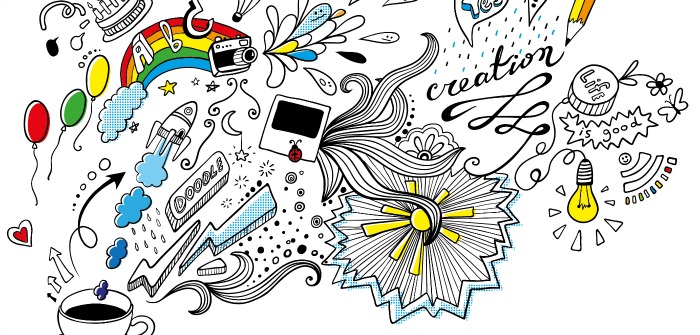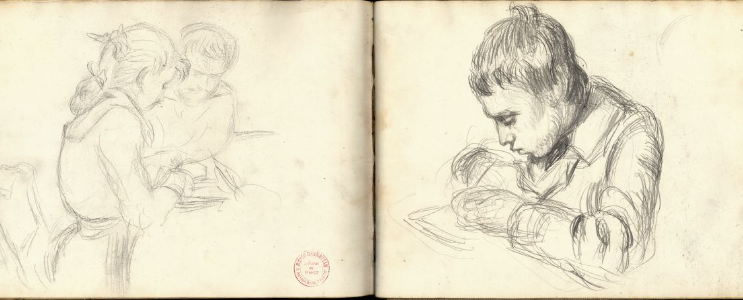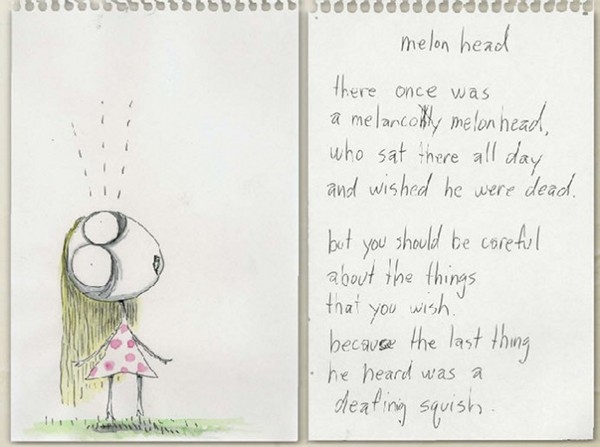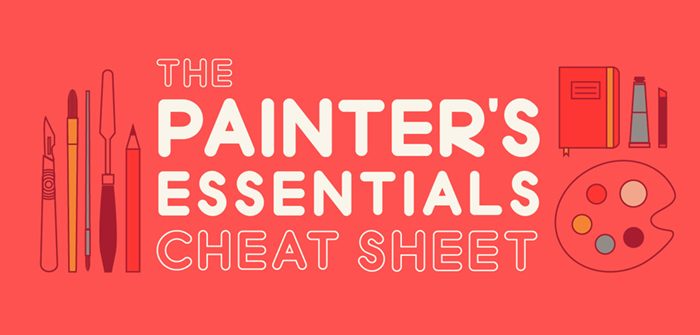
The humble sketchbook is the tool of choice for many aspiring artists planning their next foray into the expression of their creativity. Older, wiser and established artists use sketchbooks, art schools across the globe demand their regular use, and young creatives should be itching to get their hands on a good book to develop their skill and style. But how should a sketchbook be used? Is their one rule or many? Here we look at this trusted friend of artists.
Related: The Essential Painter’s Cheat Sheet [Infographic]
Why Sketch?
Record your ideas, sketch your ideas, doodle and try any combination of any type of art that comes to mind. Getting into the habit of creative thinking by experimenting, exploring different materials, solving problems, using your imagination and willing to make mistakes will help you boost your creativity and creative thinking.
If one day you find yourself facing a creative block, where you stare endlessly at a blank page, then your sketchbook can be a source of inspiration. Maybe you doodle something a month ago that can come in handy? Maybe you wrote a plan to learn how to use a new brush? Now is your chance to develop a new skill!
Your sketchbook
This is the best thing you can do on your journey to becoming a seasoned sketchbook-using pro. All you need to do is buy a book of blank pages, this is your sketchbook, simple. If you are sceptical and don’t want to plunge into the financial commitment of purchasing such a book, then find some recycled paper and staple a couple together. Simple!
Here are our favourite big-name sketchbooks, depending on purpose:
- Pencil & Paint drawings – Moleskine
- Mostly words – Paperblanks
- Product & logo design – Field Notes
That being said, you don’t need a fancy name to fuel your artistic talent. Take any blank book and ask yourself, ‘can I sketch on this?’ If the answer is yes, you’re set.

A customised sketchbook
Your sketchbook is a creative zone, everything about it should scream individuality. Go wild on the front cover by sticking anything to it, make it your own. Put glitter, sequins, Lego, papier-mâché, unicorns, bears, tigers, robots, monkeys, centaurs or any mythological creatures that really get your creativity flowing, any materials that inspire you such as paint, pencils, rocks, grass… stick it all to the front so that when people see it, they know it’s yours.

Using a sketchbook
Leonardo Da Vinci used one, Picasso used one, Van Gogh had one, if it was good enough for those creatives, then surely it’s good enough for you. The important thing to remember when using your sketchbook all the time is to not be afraid of making mistakes. Make mistakes; mistakes can blossom into a great idea.
Set yourself challenges from time to time like having to make a three-minute painting, draw only using straight lines, make a picture with tape and so on. Also consider having themed days or weeks to experiment with particular styles, materials and ideas.

Keep your sketchbook
You never know when the creative mood will strike. You may see a person with a weird walk, a news reporter with an unusually large nose, an excessively large man eating a Mr Whippy, a strangely written shop sign – all these decorate our day to day lives and are worth recording for a future creative moment.
Consider your sketchbook a playground in which to experiment with colours, materials, lines, shapes, layout, words and ideas.
How do you use your sketchbook? Share your thoughts in the comments below.
